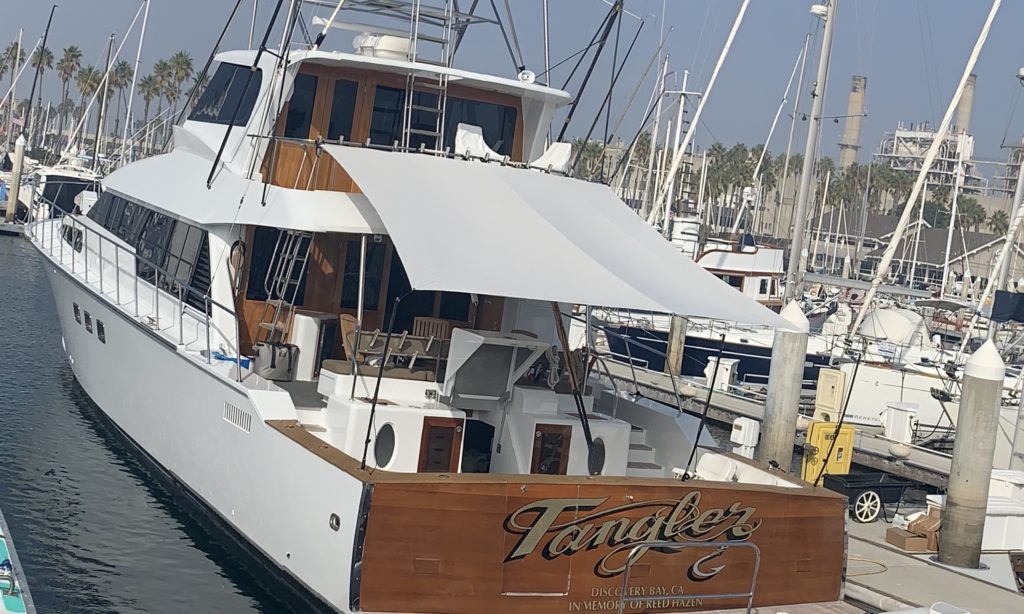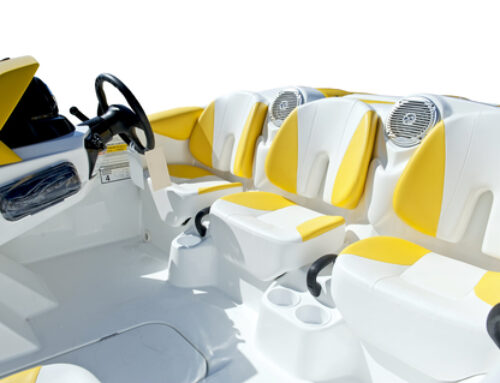Imagining new ways to create shade

Whitney Carman relies on lateral thinking and relationship building to create innovative shade solutions.
By Sigrid Tornquist
“I think one of the reasons my projects are unique has to do with the ability for lateral thinking, which means seeing a variety of solutions to a problem or uses for an object, and not necessarily just what I want,” says Whitney Carman, owner of Even Keel Canvas LLC, Lomita, Calif. “Part of the reason I love doing challenging new projects is that it makes me more creative and gives me more ideas.”
Carman had done many shade projects in the past, which she says were “no longer intriguing,” so when she took on a Viking 80, she was excited about the challenge. “Most people will just make a blank that’s big enough and cut the shape that they need out of that,” Carman says. “I sketched five different elaborate seam possibilities—and right before I was about to cut all those pieces, I changed my mind. I kept the elaborate symmetry but simplified it. When things are done well, they look effortless.”
The design challenge is only part of the equation that makes the process gratifying for Carman. Her relationship with clients is another vital component of the work that she finds satisfying, a fondness she attributes to a father who was a skilled marine fabricator. “I have always enjoyed talking with customers while my dad worked,” Carman says. “I was young when he first brought me along to the shop [in Vermont], probably five or six. I would practice my French with the Canadians, tell them about the cover my dad made that looked like Champ, the mythical monster of Lake Champlain. I enjoyed getting to know people. My dad always made it fun for my brother and me, and I think that’s part of the reason that I decided to learn the trade—and enjoy listening to clients.”
Carman says some fabricators find architects and engineers to be the most difficult clients because they often want to be more involved in their projects. “But they are creative, and their thoughts should be heard, respected and interpreted,” she says. “Instead of seeing that as an interference, I allow them to inspire me.
“But I still have to set limits,” she adds. “As an artist, I want to have a say in what I create. And some of those clients end up being my best referrals.”
Building broad relationships is also a smart business move. When the time comes to start working at a new marina, the first thing Carman does is find the manager and go introduce herself—before she ever meets with the customers. “Some marinas are very strict about the hours you can work and then you have to wait for the gates to open to get going,” she says. “I introduce myself, ask what their rules are, and what their email address is so I can send them a copy of my insurance. Then I’m never a threat—and eventually I do work for their properties making cushions and pool slings.”
 TEXTILES.ORG
TEXTILES.ORG 





